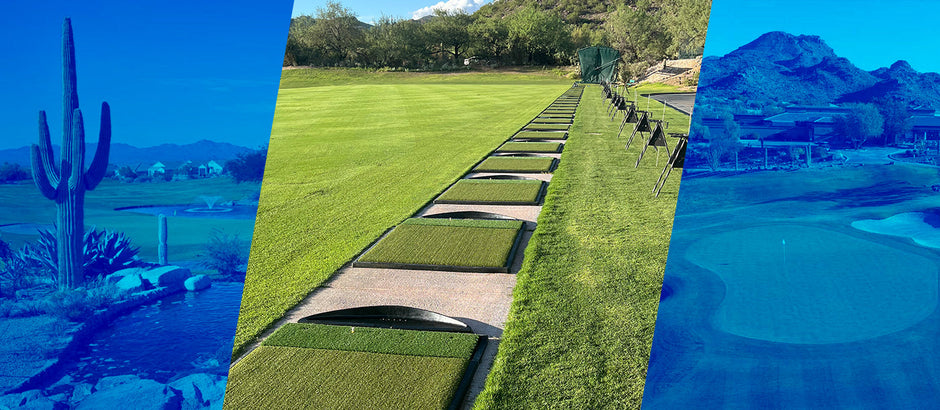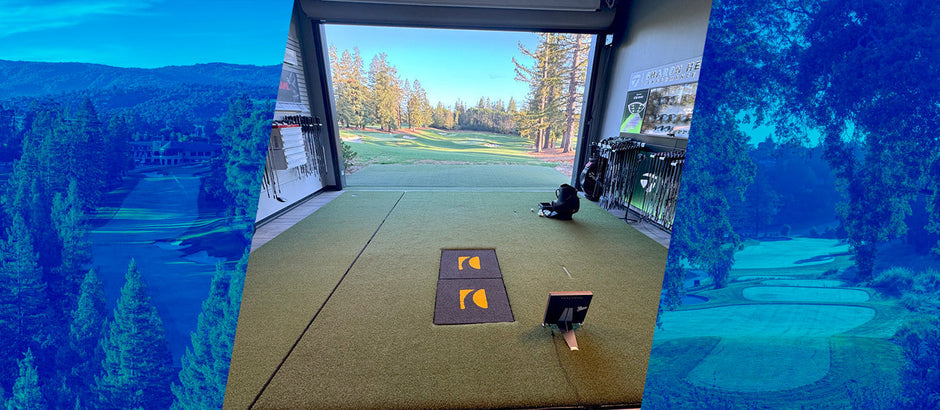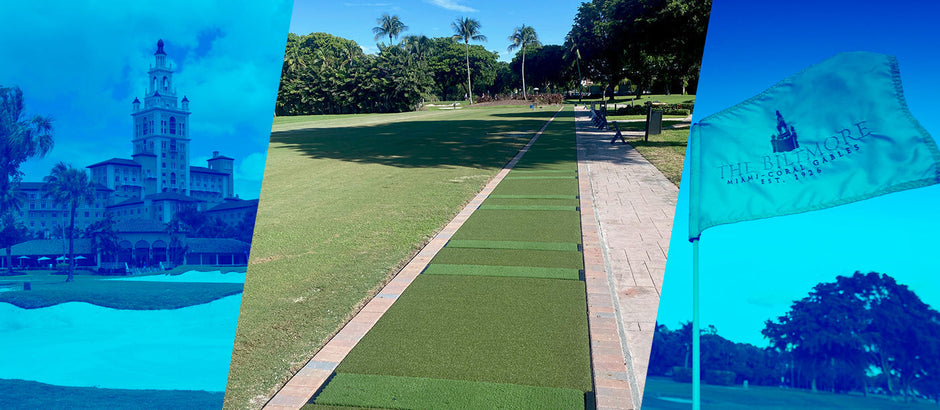There are a lot of options for how golf mats and tee lines are constructed. The reality is that many manufacturers take shortcuts to keep costs down, but who ultimately pays the price? Usually it’s the golfers, who must deal with the negative impacts on their practice, their games and even their bodies.
Most traditional golf mats and tee lines provide a relatively thin hitting surface with low pile turf. And when you combine that with placement of that turf directly onto a hard surface, the result can be excess movement underfoot during the swing, unwanted bounce of the clubhead on the hitting surface, and impact that can be painful to the golfer’s joints. Needless to say, none of that is good when you’re out practicing or playing on your home golf setup.
Steve Pate, 6-time PGA Tour winner, commented on such mat construction: “It’s so unrealistic as far as practicing, it’s like green painted concrete. You flinch down at the bottom, you’re always shallowing out your angle of attack… because it hurts.” (Incidentally, Pate collaborated with Fiberbuilt Golf in the design of its Player Preferred Series of golf mats to deliver a hitting surface for better players who appreciate improved feel and sound at impact.)
So what can make the difference for providing a superior practice experience? Fiberbuilt Golf uses a premium rubber base for most of its golf mats and all its tee lines to give golfers enhanced benefits for their practice environments.

Here are some of the key advantages:
Stability – Thanks to their thickness and weight, the modular rubber bases used in Fiberbuilt Golf mats and tee lines provide extremely sturdy and stable platforms for the golfer to stand on. This means that they never move or slip out as the golfer is swinging, which is an absolute MUST for effective golf practice and to ensure launch monitor numbers are accurate.

Comfort and Injury Prevention – The rubber bases provide a level of cushioning that not only feels better under players’ feet, but also helps reduce the “turf shock” often experienced with regular impact on traditional golf mats. This makes contact way more friendly to the body and helps eliminate any injuries to golfers’ joints, even with a high level of swing repetition.

Performance – When you’re practicing on an artificial hitting surface, you want it to be as close to real turf as possible, especially when using a launch monitor to track your swing metrics or provide realistic playing conditions for a simulator setup. When hitting on mats with a rubber base, it can prevent additional, unwanted club bounce that alters the swing, and can help avoid a player changing their swing because they’re so worried about the pain caused by hitting the ground. Swinging with comfort and confidence is key to an accurate simulation of hitting on real fairway grass.

Easy Setup – Fiberbuilt Golf’s base pieces are all totally modular and use a simple pin-in-hole design to make assembling the bases for hitting mats and tee lines simple, quick, and totally tool-free.


And while the base pieces are thick and heavy enough to provide great stability, they’re also constructed with a ribbed design so they’re not so heavy that they can’t easily be moved around when necessary. 
Earth-Friendly Materials – As if all the above benefits aren’t good enough, Fiberbuilt’s rubber base construction is also good for the environment. The materials are produced from recycled rubber products that would otherwise be piling up in landfill. Fiberbuilt is happy to do its part to support the health of the planet while supporting the improvement of its customers' golf practice experiences.
If you want more guidance in what to look for in a golf hitting mat or tee line or to create your customized solution, get in touch with our customer service experts directly at (833) 328-3218 or customerservice@fiberbuiltgolf.com.








